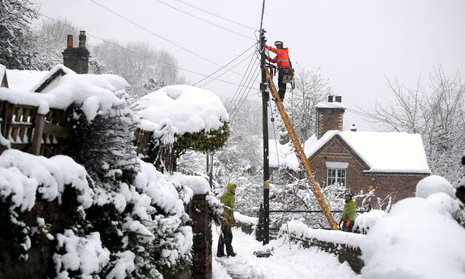In a proper working air conditioning (AC) system, there is a normal temperature profile for every refrigerant line. The suction line (the large insulated line) will be cold or cool to the touch, as it contains low-pressure refrigerant vapor from the evaporator to the compressor.
The liquid line (the small copper tube) will be warm or even hot, as it contains high-pressure, high-temperature liquid refrigerant from the condenser to the indoor expansion device.
If a liquid line is cold instead of being warm, it is a sign that something in the refrigeration cycle is not happening as it should. It is not a normal condition and is usually a fault with refrigerant flow, charge, or restriction most of the time.
The cause for this to happen is best understood by taking a closer look at the refrigeration cycle and the common faults that will cause this symptom.
The Role of the Liquid Line
The liquid line transfers liquid state refrigerant from the outdoor condenser (having released heat) to the indoor metering device (say, a thermostatic expansion valve or a capillary tube). By design:
- Discharge gas exits the compressor hot.
- The condenser releases heat, condensing the vapor to a high-pressure liquid.
- The liquid line transfers this hot liquid refrigerant into the evaporator section.
Because of this process, the liquid line is always warmer than ambient. Refrigerant is either:
- Not completely condensed (flashing into vapor too early).
- Reducing pressure in the line because of restriction.
- Flowing in abnormal quantities or pressures due to component failure or mischarge.
Most Common Reasons for a Cold Liquid Line
1. Low Refrigerant Charge
One of the most common reasons is an undercharged system. If there is low refrigerant charge:
- The condenser does not have enough refrigerant to maintain a solid column of liquid.
- Rather than liquid, liquid-vapor mixture leaves the condenser.
- Because refrigerant flashes into vapor in the liquid line, it steals heat from the copper pipe, and the line will be cold to the touch.
Low charge symptoms are:
- Bubble in the sight glass (if present).
- low suction and discharge pressures.
- poor cooling ability.
- periodically, frosting on parts of the evaporator.
Also read: AC Compressor Working but Not Cooling
2. Liquid Line Restriction
A restricted liquid line, usually due to a blocked filter drier, kinked tubing, or line trash, will cause a drop in pressure.
- high-pressure liquid abruptly loses pressure when exiting a restriction.
- The drop causes some of the refrigerant to flash into vapor.
- The flashing effect captures heat, chilling the liquid line downstream of the restriction.
How to establish whether restriction is the cause:
- Inspect temperature before and after the filter drier. Deep drop = clogging.
- The drier may be frosted or beading.
- Subcooling readings will be unwarrantedly high before the restriction and low afterwards.
3. Oversized or Defective Metering Device
The metering device controls the quantity of refrigerant that enters the evaporator coil. If stuck open or improperly sized:
- Too much refrigerant flows through.
- System pressures alter in ways that may cause abnormal cooling of the liquid line.
This is less common than restriction or low charge but can also cause the liquid line to cool abnormally.
4. Outdoor Weather Conditions

At low ambient temperatures, especially during shoulder seasons when the system is running, the condenser may over-reject heat.
- In this case, the liquid refrigerant coming out of the condenser may not be as warm as usual.
- In extreme cases, it may actually be cool, especially if the system is lightly loaded.
But if the liquid line is cold to the touch or sweaty, this typically means something is wrong and not just cool weather.
5. Reverse Valve or Piping Issue
In heat pumps, the flow of refrigerant varies depending on whether the system is in cooling mode or heating mode.
- An incorrect reversing valve will cause out-of-range temperatures in the lines.
- With incorrect piping or partial failure of a valve, what should be the “liquid line” in cooling mode may instead have a different response.
This is not likely in most cooling-only air conditioners but is important for heat pump troubleshooting.
Also Read: Heat Pump Freezing Up.
Troubleshooting a Cold Liquid Line
A technician would typically work in a methodical way to troubleshoot why the liquid line is cold.
Step 1: Check System Pressures
Using gauges, take suction and discharge pressures. Compare to manufacturer guidelines.
- Low suction and low discharge → likely low refrigerant charge.
- Normal suction but low discharge → possible restriction or airflow problem.
- High discharge with low suction → possibly a plugged metering device or line restriction.
Step 2: Measure Superheat and Subcooling
- Superheat: Verifies the temperature of discharged refrigerant vapor from the evaporator compared to its saturation temperature.
- Subcooling: Verifies the temperature of discharged liquid refrigerant from the condenser compared to its saturation temperature.
These parameters help find out if refrigerant is flashing in the liquid line or not. For example:
- Low subcooling means refrigerant is boiling too early.
- High superheat and low suction mean undercharge.
Step 3: Filter Drier and Liquid Line Check
- Check if the filter drier is colder than surrounding areas.
- Look for sweating or frost.
- Compare inlet and outlet temperatures using an infrared thermometer.
Step 4: Check Refrigerant Charge
If possible, stabilize the proper refrigerant charge according to the nameplate. Undercharged systems virtually always result in atypical line temperatures.
Also read: Ac Unit Freezing Up At Night
Step 5: Consider System Age and Maintenance
- Time-proven systems may have oil logging, scale, or trash in the lines.
- Incorrect previous service also has a tendency to leave non-condensables (like air) in the system, which will alter pressure-temperature relationships.
Why It Matters
A cold liquid line is more than an anomaly. It impacts system performance and reliability directly.
- Loss of Efficiency: When the refrigerant is flashing inside the liquid line, the evaporator receives less liquid refrigerant, lowering the cooling capacity.
- Stress on Compressor: Unpredictable pressures stress the compressor, shortening its life.
- • Comfort Problems: Inadequate cooling leads to hot indoor air, humidity problems, and customer complaints.
Real-World Example
Imagine a technician sent out to fix a home split AC unit where the owner is complaining that it does not cool properly. When the tech gets there, he discovers the liquid line is not warm but cold to the touch and even slightly sweating.
- Low suction and low head pressure readings on pressure gauges.
- The filter drier outlet is cooler than the inlet.
- Subcooling is nearly zero.
This indicates low charge or restriction. The technician drains the filter drier, puts in a new one, and recharges the system to factory level. The liquid line gets warm as expected, and the cooling capacity is normal.
Also read: Hvac freeon coil freezing up.
Conclusion
An AC system cold liquid line is never a normal operating condition. It typically means one of three main faults: low charge of refrigerant, liquid line restriction, or faulty parts such as the metering device. Ambient conditions or heat pump valve problems might be involved in some cases, but these are not so common.
By understanding the role of the liquid line and adhering to methodical troubleshooting—pressure checking, superheat, subcooling, and restriction—the technician can readily identify the cause and correct it.
In summary: if the liquid line is cold, the system is not conveying refrigerant as intended, and it needs correction.















